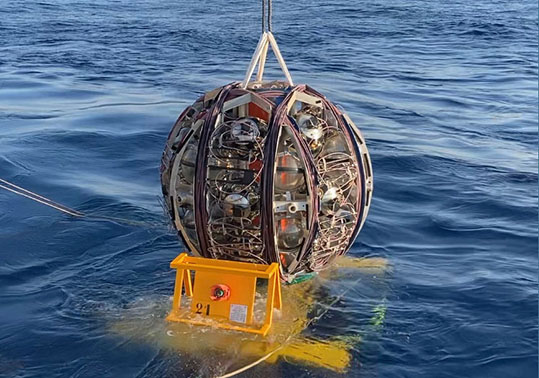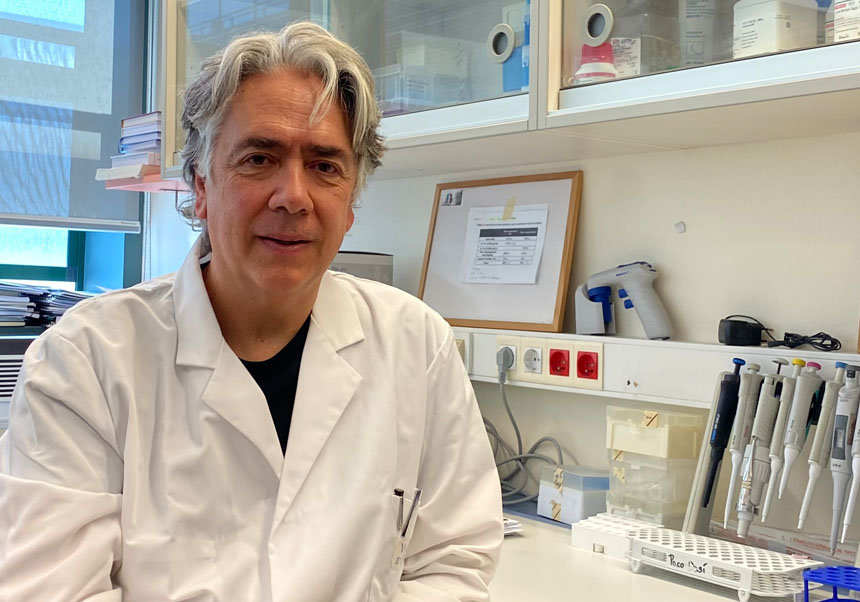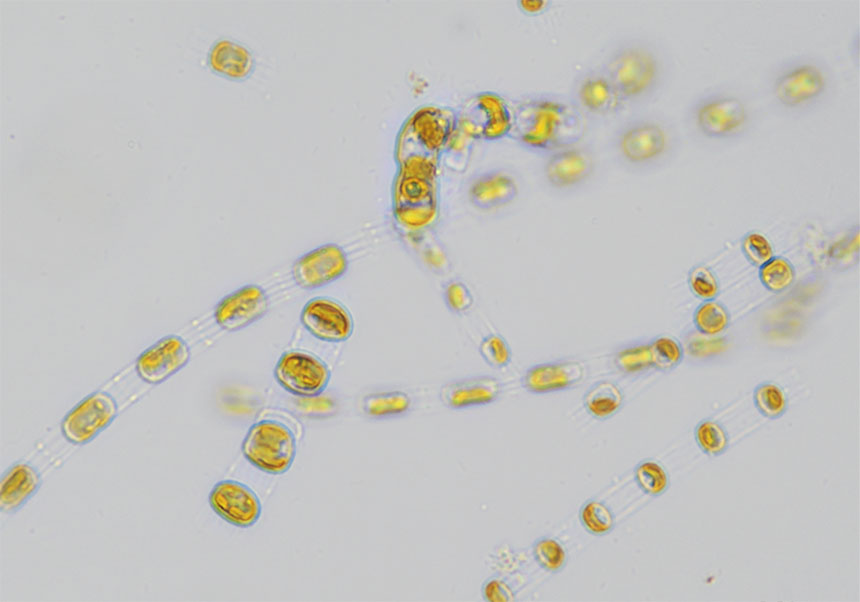Relay between the ANTARES and KM3NeT neutrino telescopes, in which IFIC participates
- Parc Científic
- July 1st, 2022

This week sees the installation of new detection lines for the KM3NeT neutrino telescope. It is a large infrastructure located in the depths of the Mediterranean Sea that will help to elucidate the origin of cosmic rays, to better understand the nature of the neutrino and to shed light on the mystery of dark matter at the centre of the Milky Way and on the sun. The Institute of Corpuscular Physics (IFIC), a joint centre of the Spanish Research Council (CSIC) and the Universitat de València (UV), has contributed to the development, design and implementation of this large experiment and its predecessor ANTARES.
The KM3NeT telescope, which occupies a cubic kilometer of the Mediterranean Sea between France and Italy at depth of between 2,500 and 3,500 metres, will definitively succeed ANTARES. This neutrino telescope was shut down a few months ago after 16 years of operation, although its data are still being analysed. The decommissioning of its detector lines has already taken place and they are being replaced by the new, more optimised KM3NeT detector lines.
KM3NeT is made up of two detectors. ARCA, with two blocks of 115 detector lines, 20 of which are already in operation, is dedicated to neutrino astronomy. And ORCA, a single block of 115 detector lines with the installation of 5 new lines this week, now has 15 operational. ORCA has a higher density of photomultipliers, which helps to better detect atmospheric neutrinos and to study one of the most surprising properties of this mysterious particle: the change (oscillation) between its different types as it passes through the Earth. The next campaign to deploy more detection lines in ORCA is planned for this autumn. ORCA is expected to be completed in 2026 and ARCA in 2028.
Neutrinos are elementary particles that are very abundant in the Universe, but very elusive and difficult to detect. In neutrino astronomy, neutrinos are detected in the most violent and energetic phenomena in the universe, the study of which could be used to try to elucidate unresolved questions such as the origin of cosmic rays or dark matter.
Neutrino telescopes have the particularity of being located at great depths (2-3 km from the surface) and of having a characteristic infrastructure in which optional sensors are distributed in vertical lines forming a forest of photomultipliers that observe large volumes of water or ice in the dark. In the case of underwater detectors, this design means that both construction and decommissioning revolve around the challenges of deploying or removing lines distributed over large abyssal areas.
IFIC participation
The VEGA group (Valencia Experimental Group of Astroparticles) of the IFIC has been involved in the development of ANTARES and the current KM3NeT since its inception. It is involved in the integration and construction as well as in the maintenance and data analysis within international collaborations. “In the coming years, KM3NeT will be the flagship of the European neutrino astronomy community and will offer excellent scientific opportunities that Spanish groups are ready to take advantage of”, says Juan José Hernández Rey, former ANTARES spokesperson and founder of IFIC’s VEGA group. “Antares has been an unquestionable success thanks to the tenacity of an extraordinary group of scientists and engineers, but the most interesting is yet to come, as we will see very soon”, says Juande Zornoza, current leader of the VEGA group.
ANTARES
During all these years, ANTARES has produced a wealth of data that has led to the most comprehensive scientific results on the search for WIMPs, one of the most popular candidates for the formation of dark matter. It is also confirming the cosmic neutrino flux seen by IceCube, as well as elucidating its origin, among other outstanding results.
The VEGA group at IFIC continues to perform analyses that search for point sources of cosmic neutrinos in coincidence with other astrophysical messengers, as well as searches for dark matter in the centre of the Milky Way and in the Sun. In addition, the group has contributed to the development of the hardware, the design of the detector and testing of its elements, its construction, the temporal calibration and the study of the optical properties of the detector environment. Several working group coordinators of the ANTARES collaboration are members of VEGA at IFIC: Paco Salesa (astronomy), Rebecca Gozzini (dark matter) and Agustín Sánchez (calibration).
More information:
















